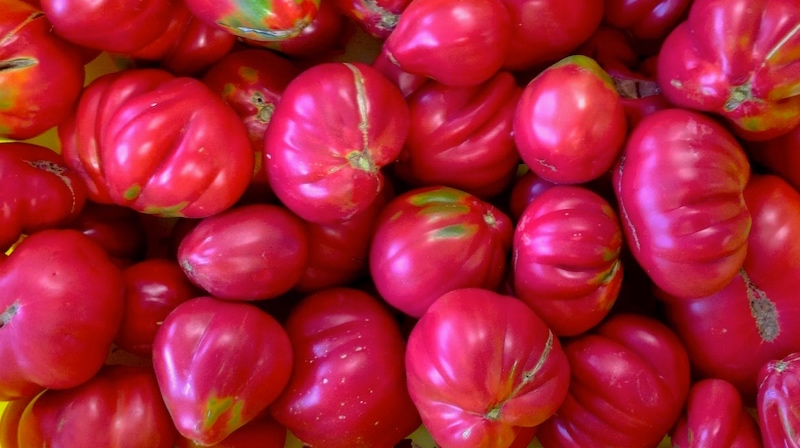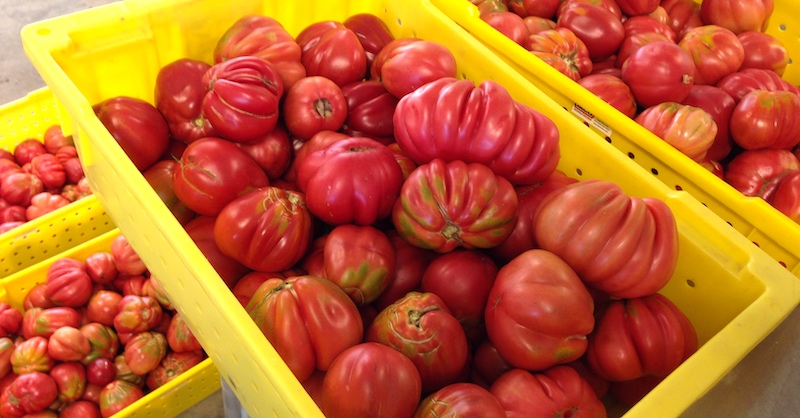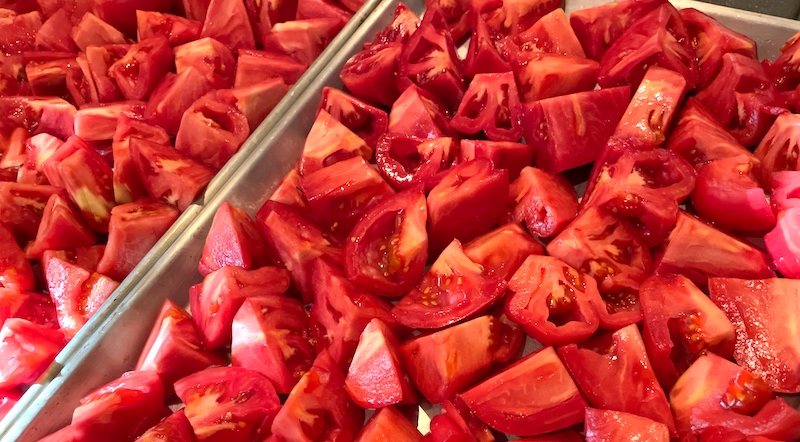
Astiana Tomatoes: Ayers Creek Farm Legacy Lives On Through Seed
The photo appeared on my phone with the message "Spotted at Portland Nursery today!" It showed a tomato plant in a four-inch plastic pot with a label stating "Astiana Tomato."
Along with the other stunningly delicious vegetables, corn and pole beans grown by Anthony and Carol Boutard at Ayers Creek Farm—I counted more than a dozen varieties of dried beans at one point, though many more may not have measured up to their exacting standards and been shelved—these tomatoes were feared lost to their adoring fans when the Boutards sold the farm in 2022.

Fortunately a few area farmers had the presence of mind a few years back to start growing out these open-pollinated tomatoes, but remember, if you only start with a few seeds, it can take several seasons to have enough seeds to produce fruit in sufficient quantities to supply customers. So the descendants of the original Astianas were available from a few farms in limited quantities, though none had ever been grown for nursery stock aimed at home gardeners.
Enter legendary plantswoman Alice Doyle of Log House Plants in Cottage Grove, who saw the value of adding this remarkably stable variety to her list of 180 other tomato varieties. "It's a really good tomato for this region," she said, ticking off its disease-resistance and the fact that they are self-pollinating, as well as the care the Boutards took in selecting seed every year.
Doyle related that Anthony would have the first fruits to ripen in the field for his breakfast every morning. She said he would cut them open and, if they were fragrant and didn't have many seeds—these are paste tomatoes, after all—those were ones he'd save.

Taking the Boutard's breeding program one step further, Doyle grafted the Astianas onto a root stock, a technique she observed on her travels in Crete. Calling it a sustainable procedure that results in four to five times more fruit per plant, it also increases the plant's resistance to soil-borne disease. A side benefit was that Astianas were already resistant to late blight, an airborne disease best known for causing the devastating Irish potato famine of the 1840s.
Doyle was surprised at the number of requests she'd been getting from nurseries and home gardeners for them. "I can't believe how many people are asking for them," she said. Though anyone who remembers the long line of customers during tomato season at the Ayers Creek Farm booth at the Hillsdale Farmers Market could have assured her that these late season beauties were more than worth seeking out.
As the plant tag, written by Anthony himself, says, "excellent to sauce, preserve and eat fresh. From a landrace tomato where the 'Sound of Music' was filmed near Asti in the Po Valley of Italy. Selected and refined by Ayers Creek Farm, Oregon, as the best tomato for the 45th parallel."
Astiana plants are available from several local nurseries including Portland Nursery and Cornell Farm, as well as in the Seattle area, according to Doyle. She instructs: "Do not bury deep so the graft is as far away from the soil as possible. Match the level in the pot so the scion doesn’t root in and compromise the benefits of the rootstock."
Read the archives of Anthony Boutard's fascinating Farm Bulletins that chronicle the seasons at Ayers Creek Farm here and here.
